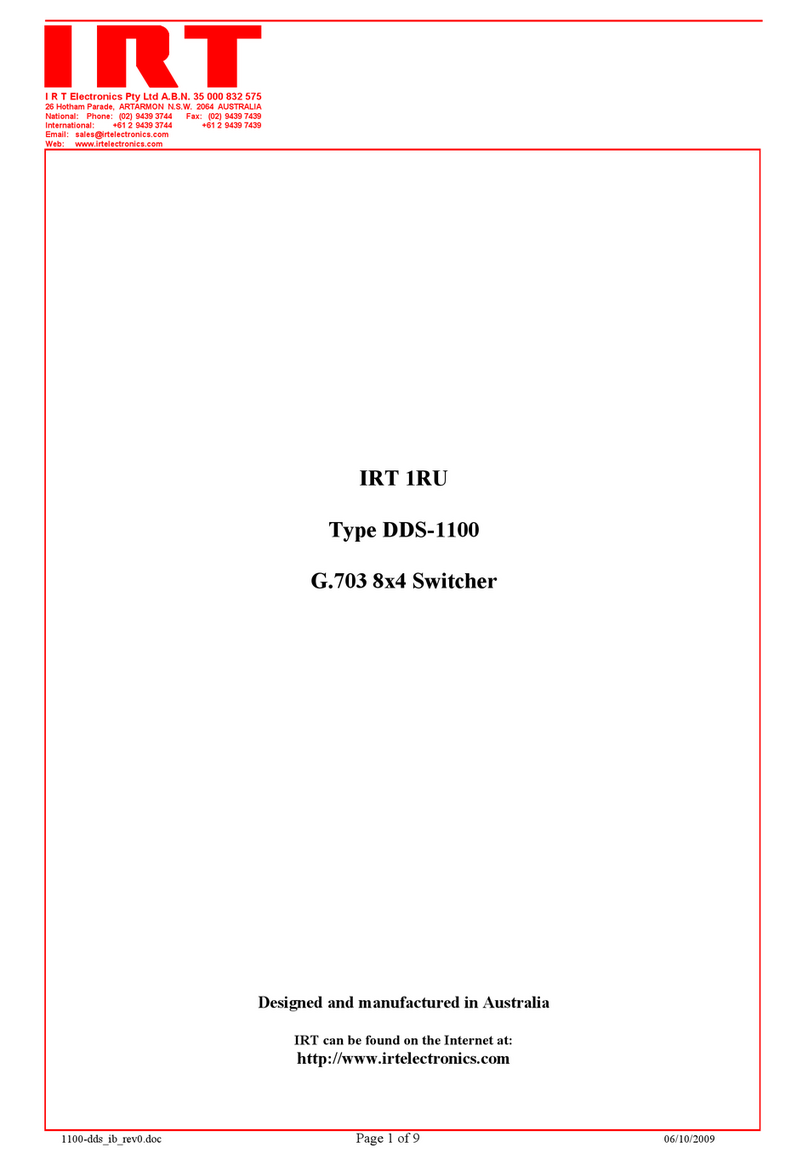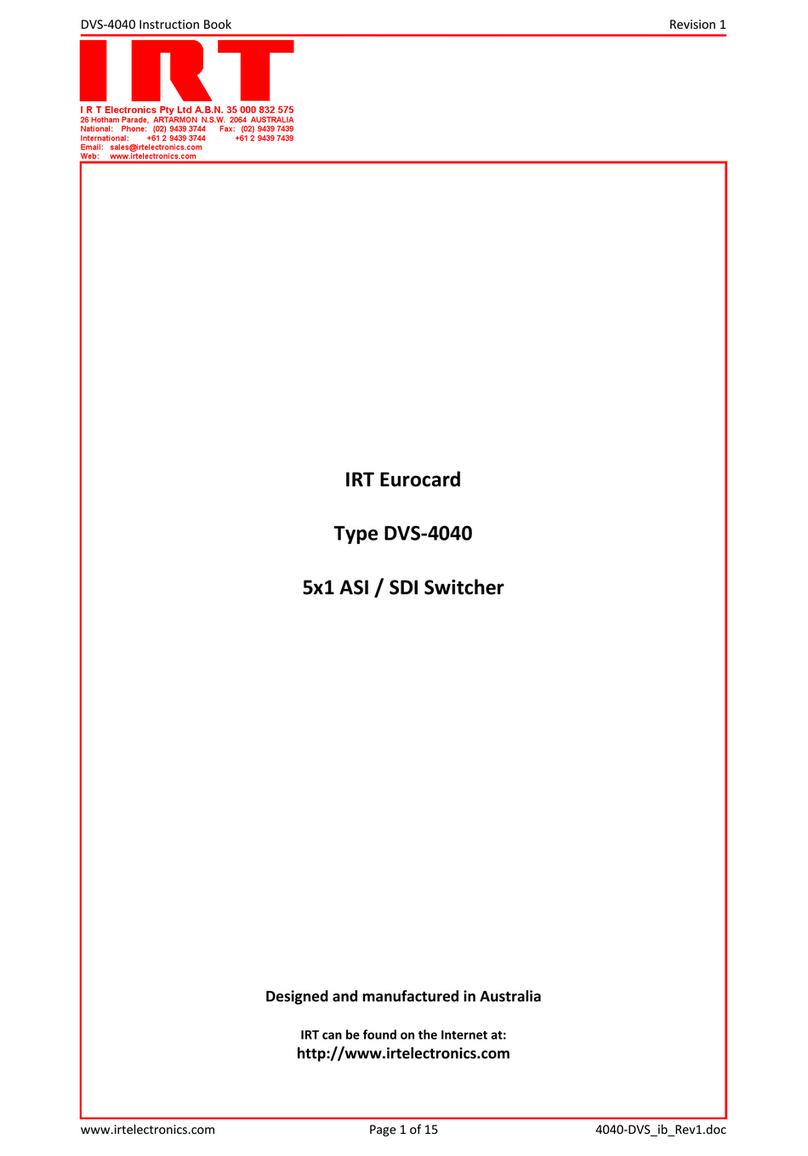3170-avs.ib.rev5.doc page 8 of 16 16/10/2007
Interconnecting modules:
From the description given under circuit description -- control circuit the following rules for daisy chaining the
modules can be deduced:
I. Modules are looped by joining PL 5 (data out) on one module to PL 4 (data in) on the next.
II. A CPS-9000 or CPS-9001 remote control panel must be powered by either:
(a) Connecting its PL 5 to PL 4 on a powered module (i.e. one of the switcher group or a CDC-3060
logic control module).
or
(b) Connecting its PL 5 to PL 4 on another CPS-9000 that is configured as in (a).
III. If a CDC-3060 logic control module is used it must be the last link in the chain. I.e.. PL 4 of the CDC-3060
connects to PL 5 of the last switcher.
Switch pulses - internal & external sync.:
Each 3000 series switcher has a free running switch pulse generator for executing a crosspoint change. The period is
approximately 25 ms. Uniquely, the AVS-3010/3011 5 x 1 video switcher can synchronise its switch pulse
generator so that transitions will occur in the vertical interval of the video signal that is currently selected.
When a switcher group module is configured as Inputs 1-5 (using LK’s 1 & 2), it uses its own switch pulses. If
configured for any other input range (e.g. Inputs 6-10), it defaults to using the switch pulses incoming on its PL 4
connector -- switch pulse in, and also passes these on to switch pulse out on its PL 5.
By changing LK 4 the switcher can be forced to use the incoming switch pulses from an external AVS-3010/3011
switcher if the switching is required to be synchronised to a related video signal.
As the switch pulse signal is sent from the AVS-3010/3011 1 - 5 switcher only on its PL 5 connector, this must be
the first switcher connected to the chain.
Power on reset:
Power on reset is needed so that at power on only one switcher or control panel drives the buss. LK 3 on each of the
Switcher Group or the CPS-9000 / 9001 remote control panel is used to select which unit is in control at power on.
If LK 3B is not installed and the switcher/control panel is configured to be for Inputs 1-5 then at power on that unit
will take control of the buss and select input 1.
In the case of a multi-level set up, such as a 5 x 1 video with a 5 x 1 audio as a slave, all the slaves should have
LK 3B installed.
LK 3 has another function. If LK 3A is not installed then any CPS-3050 switcher panel installed on the front of the
module will act as tally only -- the operation of any of its buttons will have no effect.
Switcher set ups larger than 5 x 1
The AVS-3170 has the addressing capability to be set as 1 to 5, 6 to 10, 11 to 15 or 16 to 20. However, the
switching arrangement does not permit AVS-3170's to be linked for 10 x 1 (or more) operation.
This does not prevent the AVS-3170 form being used as part of a larger system, but care must be taken to ensure
that the envisaged design is realisable in practice.
For example: If two AVS-3170 switchers are connected to a CPS-1050 control panel, with one switcher set to
addresses 1 - 5 and the other to 6 - 10, then pressing button 7 on the control panel will result in the first switcher
output reverting to input 1 and the second selecting input 2 (7).
The control panel would only show input 7 as selected. If the switchers were fitted with TPS-3010 tally panels,
these would show no selection on switcher 1 - 5 and input 2 (7) on switcher 6 - 10.






























